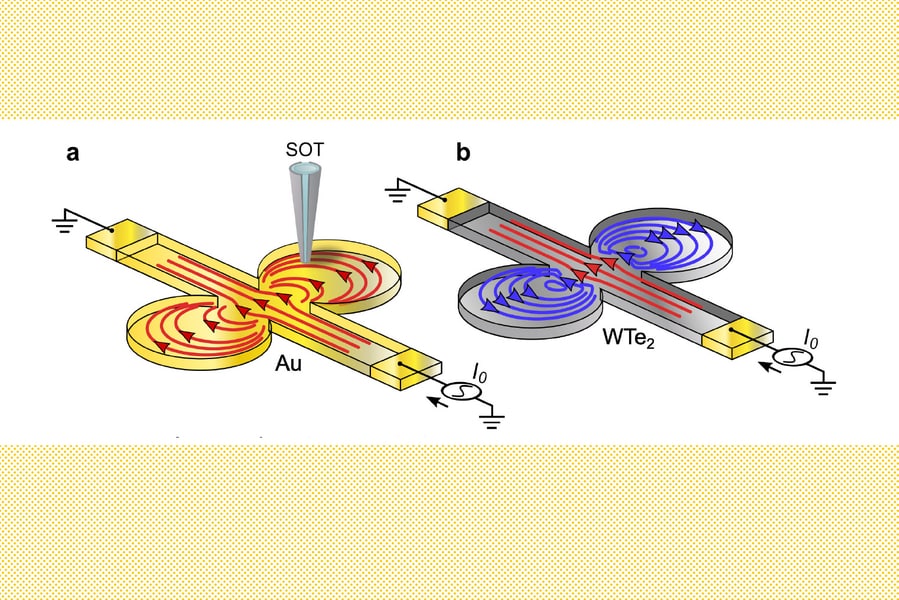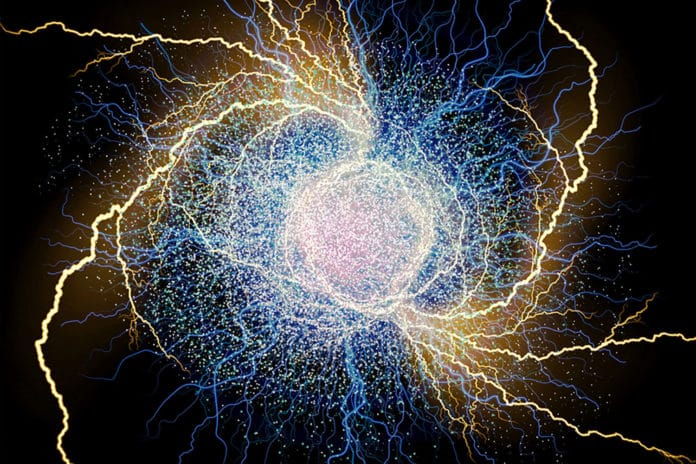Physicists at MIT and the Weizmann Institute of Science have visualized whirlpools in an electron fluid. This is the first time they observed electrons flowing in vortices, or whirlpools, the hallmarks of hydrodynamic flow.
Theorists have long predicted electrons whirlpools or vortices but have never been seen until now. Now, physicists have seen it, and it’s a clear sign of being in this new regime, where electrons behave as a fluid, not as individual particles.
Leonid Levitov, professor of physics at MIT, said, “We know when electrons go in a fluid state, [energy] dissipation drops, and that’s of interest in designing low-power electronics. This new observation is another step in that direction.”
In 2017, Levitov and colleagues at the University of Manchester detected signs of fluid-like electron behavior in graphene. They etched a thin channel on a graphene sheet with several pinch points. Sending current through the channel could also flow through the constrictions with little resistance.
This suggested that the current electrons could squeeze through the pinch points collectively, much like a fluid, rather than clogging like individual grains of sand.
This discovery inspired Levitov to find other electron fluid phenomena. In this new study, physicists looked to visualize electron vortices.
Authors noted, “the most striking and ubiquitous feature in the flow of regular fluids, the formation of vortices and turbulence, has not yet been observed in electron fluids despite numerous theoretical predictions.”

For visualization, the team used tungsten ditelluride (WTe2), one of the new quantum materials where electrons strongly interact and behave as quantum waves rather than particles. They started with synthesizing pure single crystals of tungsten ditelluride and exfoliated thin flakes of the material.
Later, using e-beam lithography and plasma etching techniques, they patterned each flake into a center channel connected to a circular chamber on either side. The same pattern was etched into thin flakes of gold.
They then ran current through the patterned sample at ultralow temperatures of 4.5 kelvins (about -450 degrees Fahrenheit). Using a nanoscale scanning superconducting quantum interference device (SQUID) on a tip, they could measure the current flow at specific points throughout each sample. The SQUID allows the team to see the flow of electrons through the patterned channels.
They found that electrons flowing through patterned channels in gold flakes did so without reversing direction, even when some currents passed through each side chamber before joining back up with the main current. In contrast, electrons flowing through tungsten ditelluride flowed through the channel and swirled into each side chamber, much as water would do when emptying into a bowl. The electrons created small whirlpools in each chamber before flowing back into the main channel.
Levitov said, “We observed a change in the flow direction in the chambers, where the flow direction reversed the direction as compared to that in the central strip. That is a very striking thing, and it is the same physics as that in ordinary fluids but happening with electrons on the nanoscale. That’s a clear sign of electrons being in a fluid-like regime.”
“The findings represent an experimental confirmation of a fundamental property in electron behavior. They may also explain how engineers might design low-power devices that conduct electricity more fluid, less resistive.”
Klaus Ensslin, professor of physics at ETH Zurich in Switzerland, who was not involved in the study, said, “Signatures of viscous electron flow have been reported in several experiments on different materials. The theoretical expectation of vortex-like current flow has now been confirmed experimentally, which adds an important milestone in the investigation of this novel transport regime.”
Journal Reference:
- Aharon-Steinberg, A., Völkl, T., Kaplan, A. et al. Direct observation of vortices in an electron fluid. Nature 607, 74–80 (2022). DOI: 10.1038/s41586-022-04794-y
